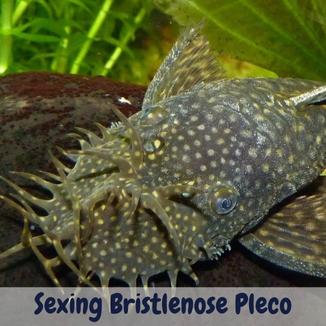Bristlenose plecos are unique and entertaining fish that are well-liked in freshwater aquariums. Finding out a bristlenose pleco’s sex can be quite difficult, making it one of the issues that many people encounter. This detailed post on sexing bristlenose pleco will clear out all your confusion.
Contents
What Is Bristlenose Pleco?
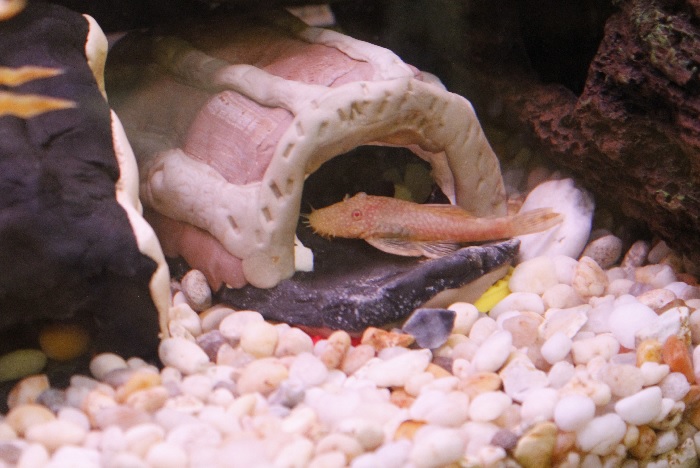
Bristlenose plecos are an excellent addition to any fish tank thanks to their distinctive appearance and propensity for controlling algae. They are a type of tropical freshwater creature that originates from the Amazon and other nearby rivers.
Their most distinctive feature is the bushy nasal extensions that grow from this fish’s snouts. The name of the fish comes from these bristles. Once the fish reaches maturity, which occurs at around six months, the bristles will begin to appear.
They are especially well-liked by newcomer fish keepers. These tiny creatures are incredibly simple to take care of and can enhance the tank’s quality.
Plus, bristlenose plecos’ life expectancy can be quite long. They have a minimum lifespan of five years although, in captivity, they have been known to live up to twelve years.
[display-posts id=”4860″ image_size=”thumbnail” posts_per_page=”1″]
It would be best if you designed their home with this fact in mind because they are naturally bottom-dwellers. Your fish will likely spend most of the time at the tank’s bottom or close to any decorations searching for food.
Thus, providing your bristlenose plecos with as many hiding spots as you can is a smart idea. Living plants, driftwood, and artificial caves are all very useful things. The bristlenose pleco only emerges at night. They will hide in certain places during the day to relax and feel secure.
Sexing Bristlenose Pleco – How To Tell
The ideal time to try sexing bristlenose pleco is when it is 6 to 8 months old and has reached sexual maturity (around 2 to 3 inches). Below are some signs that can help you with sexing between females and males.
Size
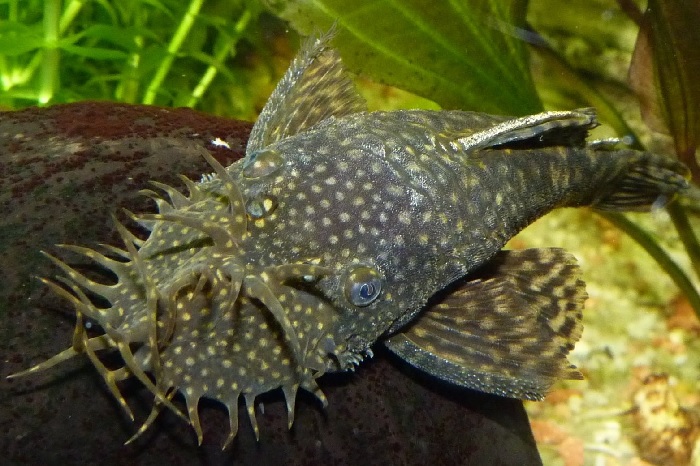
These fish grow to a smaller mature size than typical plecos. Bristlenose plecos typically reach adult sizes of around 3.5 inches. Males might be a little bit larger than females and often grow faster. It should be noted that this is most accurate when fish are of the same age, have grown up together, and received the same care.
[display-posts id=”4010″ image_size=”thumbnail” posts_per_page=”1″]
Shape
You could see a noticeable variation in the body form of your pleco if you glance down at it. The broadest region of a male’s body is found near the pectoral fins, making them more streamlined.
Meanwhile, the largest section of a female’s body is situated directly behind the pectoral fins, giving her a rounder abdomen. This is because they will be filled up with eggs before spawning.
Fin
On their gills, specifically on the opercle and pectoral fins, adult males develop tooth-like projections called odontodes. Also, males who have reached maturity develop long facial bristles and hairs around the pectoral fin edges.
The females, on the other hand, have shorter bristles on their faces and no bristles on their pectoral fins. It can be challenging for the untrained eye to recognize sex based on this indicator, yet some people are quite adept at it.
[display-posts id=”4593″ image_size=”thumbnail” posts_per_page=”1″]
Color
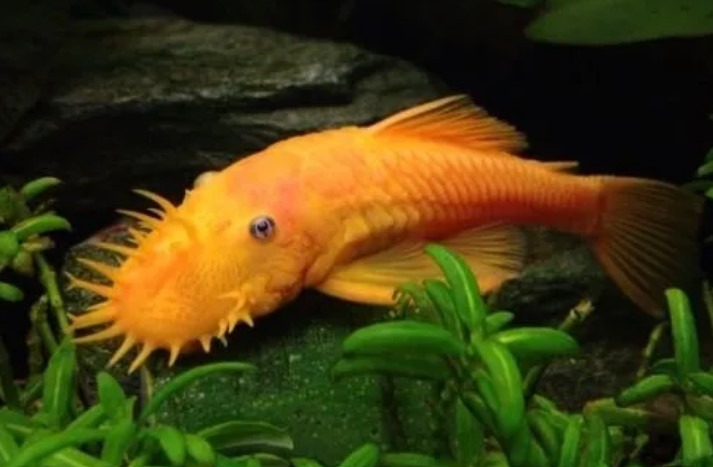
The belly of bristlenose plecos, both female and male, is usually a little lighter shade of brown than the rest of the body.
Despite the wide variety of color morphs, female and male Bristlenose plecos do not differ significantly in color, except that males turn nearly black during mating and retain that deeper color while protecting the eggs.
Behavior
The most accurate method for sexing bristlenose plecos is frequent behavior. Males tend to be more hostile toward conspecifics and species with a similar body type.
There is a good probability that a male may stake out a cave in your aquarium in addition to its territory. But the females typically wander the tank more because they don’t have a designated location.
[display-posts id=”2929″ image_size=”thumbnail” posts_per_page=”1″]
Venting
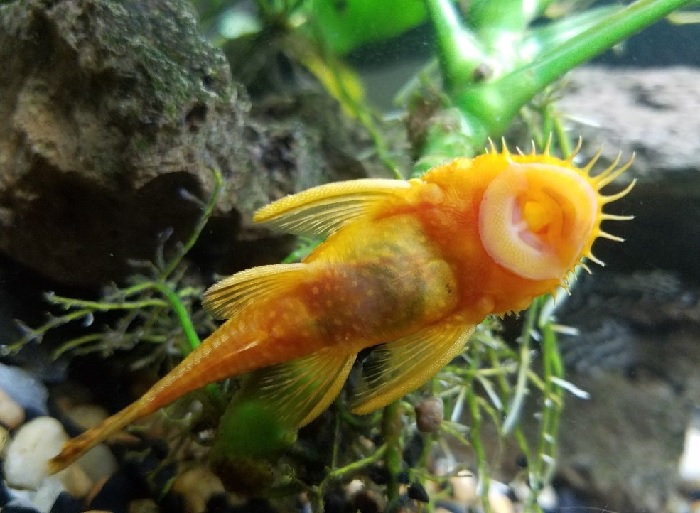
The final method of bristlenose pleco sexing is venting, which involves examining the genital papilla.
The fish will expel either sperm or eggs through this orifice between the anal and ventral fins. The ovipositor, often known as an egg tube, is circular and considerably blunter in female fish. Contrarily, the papilla is sharper in males.
Venting is not necessarily the simplest technique to distinguish male and female, but it works particularly well on monomorphic cichlids. Remember that only mature fish should be handled with this technique.
Frequently Asked Questions
Is Bristlenose Pleco A Catfish?
Yes. Bristlenose pleco is a little catfish that only reaches a height of 5 inches. This type of catfish comes in many different colors, such as green, brown, orange, red, etc.
They are gentle fish that are appropriate for a welcoming community aquarium.
[display-posts id=”2830″ image_size=”thumbnail” posts_per_page=”1″]
Do Female Bristlenose Pleco Grow Bristles?
Yes. Female bristlenose plecos do have bristles. The bristles on females are a little less prominent and protrude from the area around the mouth.
Male bristlenose plecos typically boast significantly larger bristles that develop over their mouths, noses, and other facial features.
Can I Keep Two Male Bristlenose Plecos In One Tank?
We advise you shouldn’t keep two male bristlenose plecos in the same tank since they are aggressive and possessive of their territory.
Suppose you don’t have other choices but letting them in the same tank; you must give them ample room to avoid disputes.
A 35-gallon aquarium or bigger is needed for two male bristlenose plecos to live happily.
[display-posts id=”3902″ image_size=”thumbnail” posts_per_page=”1″]
How Do Bristlenose Plecos Reproduce?
Bristlenose plecos can simply procreate; all they typically need is a cave in which to lay their eggs. They take care of the rest on their own.
You should always attempt to have a higher ratio of females to males. After fertilization, the male will guard the eggs, and they will hatch following approximately 4 to 10 days.
The Bottom Line
In all actuality, it doesn’t matter whether your bristlenose plecos are male or female unless you’re breeding. Still, suppose you want to know; just follow our guide on sexing bristlenose pleco, and you will soon have the answer.

